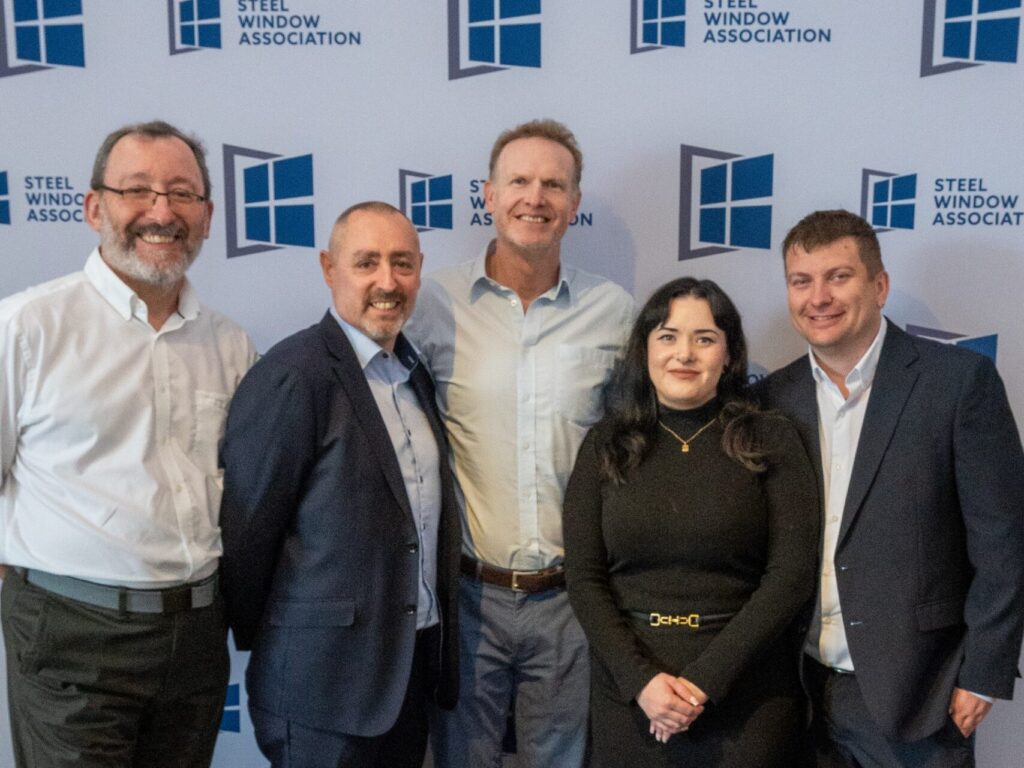James Parsons-Moore tells Showhome about the use of CAD software in the housing design industry, and the future of the design profession
Tell us a bit about your company
I started InTouch – CAD Management in 2009 after a realisation: A realisation that the AEC (Architectural Engineering Construction) industry needed a big size 11 up the backside to bring it into the 21st Century.
Working as an architectural technician for a predominantly housing-based architectural practice, I started to realise that the way in which we worked clearly wasn’t the way things should be done.
Using basic 2D CAD to produce both planning and working drawings would often become a logistical coordination nightmare.
We’ve all been there, where we have to produce a window/door schedule for a project and slowly drown in a sea of drawings and highlighter pens! I remember one particular project having 530 units; the window schedule alone took days to fully coordinate. Even then there was still a lot of work to do to keep it up-to-date and revised accordingly with any changes to the design!
A few years previously I trained in Autodesk ADT (Architectural Desktop) and figured that this could definitely help us improve certain aspects of our workflow and coordination. It did in many ways, but it also lacked that extra little bit of magic I felt we needed.
It was then (2005) I looked at my 1st BIM Solution!
And it completely changed the way I thought! It was my “eureka” moment! I knew right then that this is the way in which we should all be working.
So I taught myself how to use the software over the coming months. Before starting to use it on project work. Quickly becoming proficient and learning the best ways in which to use the software. As the CAD manager for the office (around 40-50 Architects/Technicians) it was part of my job to implement new procedures and help anyone in the office if they were struggling with anything. I decided that I actually really enjoyed doing this part more than design work! So I joined one of the big national Autodesk resellers as one of their application engineers. Learning how to train and implement the software as an “Autodesk Approved Trainer”. I could see how the design software market was moving forward and new I could play a part in helping it along. I started InTouch – CAD Management around 4 years ago, and since then I have trained close to 1000 people in the industry in how to use Revit!
What services do you offer?
Our aim is to educate the masses by bringing the new drawing methods to designers and showing them how to make their job much easier!
I’m pretty confident that we can help 99% of architectural, interior design, structural engineer and M&E consultants to improve the way in which they work. Whether it is getting them to use the software that they currently use in a better and more productive way, or showing them the benefits of BIM and how it will help them to work more efficiently!
What’s the difference between BIM and CAD software?
CAD is the generic term for any computer-based design software. It actually covers anything from a small 2D sketch to a full 3D parametrically constrained BIM model. As long as you’re designing it on the computer, then it is CAD (Computer Aided Design).
BIM is the AEC equivalent of digital prototyping in the manufacturing world. Just like in digital prototyping, you create a full model of the building design on the screen using tools for each discipline to help you quickly and accurately create a detailed model of the design, adding materials, building component information, costing and schedules.
You can then simply create different views of your model. Automatically producing sections, elevations, details, schedules, material take-offs, 3D visualisation and photo-realistic renders.
What are the advantages of using BIM?
The 2 key words when using BIM are PRODUCTIVITY and COORDINATION.
The speed in which you can work using any BIM solution is phenomenal compared to using traditional 2D CAD systems. For instance, you can move and change a window style/size/position in an elevation and have it automatically update the plan, and sections cutting through it, and schedule that its being picked up in and any 3D visualisation.
Currently most designers will use a mixture of 2D CAD, such as AutoCAD or Microstation, and then use Excel to produce any schedules. Then use a visualisation piece of software such as Google Sketchup or 3D Studio Max to produce any visualisations they require. This all often involves reproducing many steps of the design work in a completely uncoordinated manner!
BIM allows you to do all of this work at once, in a completely coordinated way. Simply by either looking at your model in different views and by extracting information in the form of a schedule.
Imagine being able to snag problems on the computer rather than on site: A problem on site can hold up the entire construction phase costing thousands if not careful. Using a BIM model to create a prototype of the building on the screen means you can check so much more at an early stage.
Can anybody learn how to use design software, or is it worth employing a specialist?
Literally anyone that is part of any design team involved in construction can and should learn how to use Revit.
There isn’t one part of the team that it couldn’t help to improve their current workflow.
I would say that an essential yet mostly under-appreciated role at any architectural/design practice is that of the CAD Manager. Yet it seems most small- to medium-sized practices completely neglect this role, instead choosing one of the technical staff to help out as and when they can. This often works out badly as the technical staff will always have pressure of project work and deadlines, meaning that they will often not get time to give this joint role the time and effort it needs.
One way around this is to have what I call a “Mobile CAD Manager” – someone that can come in once or twice a month and help with any problems, training or content creation for family/block libraries. This could very easily work out as a cheaper and a much more efficient way of managing your BIM/CAD systems.
We currently have several companies on CAD Management support contracts, helping them all to work more efficiently and productively, without having to worry about losing a member of staff to do the work.
In today’s environment, it’s important to have a balance between cost and speed. Surely it’s cheaper to just hand draw everything?
If you asked a BMW engineer to design you a new engine, do you think he’d crack open the “Rotring” pens? Do you think he’d open up his copy of AutoCAD 2004 and start drawing? Would he even open up a copy of AutoCAD 2013? Of course not!
And there is a good reason for this: It’s not because the programs and aids haven’t been OK in the past; it’s just that the design and manufacturing industry has moved on.
They know that if they tried to design this new engine in any of these ways it would take them forever and a day! It wouldn’t necessarily be the time it takes to draw, it would be the coordination of the whole thing. For example, making sure that there are no clashes and that everything is in the right place.
This is all extremely important in the manufacturing industry when you consider the cost implications of perfecting designs on the “Drawing Board” before any prototypes have been built.
From one design, there could be literally thousands of products produced, so imagine if there was even one small problem with the design!
This is why the manufacturing industry is always looking at new ways of making their design phase work better.
A manufacturing designer would use a piece of CAD software called Digital Prototyping: Basically creating the finished article on the screen. This way they can test the design, take off quantities of materials and produce the manufacturing drawings straight from the design.
This means that they have an accurate, perfectly coordinated set of drawings and design data. The AEC Industry however, is somewhat behind in this development. The software and expertise is already here; there just always seems to be a reluctance to move forward!
Is there an argument that if designers rely on software, the skills of architectural design will die out?
Design is an artform! The design process can often start far sooner than any CAD software has even been touched. There will always be a place for getting ideas down on to a piece of paper and using a drawing board. The simple answer is no, because a designer should never rely on the software for design. Any CAD system is simply a tool to allow the designer to accurately produce design documentation.
Where do you see the computer-based housing design industry going in the future?
I strongly believe that Building Information Modelling is here to stay. The technique of using a building model with information rich, intelligent components will be the way that designers work for many years to come.
Within the next few years nearly everyone will be using BIM in some form or another. It’s simply evolution: Drawing board to digital drawing boards (CAD) to BIM. The next advances will be around the technology we use for output and coordination. We are at the dawn of great hand held technology such as iPads and other tablet-style devices. Augmented reality is becoming a part of design. I don’t think it will be long before we start to see ‘Minority Report’ style computers where we’re using touch and hand gestures to design and coordinate. In this fast moving pace of modern technology it’s becoming more important to ‘keep up with the Joneses’ because if you don’t keep up… you’ll be left behind!
James has now joined Computer Aided Business Systems as their BIM implementation specialist. For more information please visit http://cabs-cad.com/











